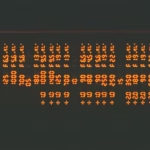In a world where digital expression has become a primary vehicle for identity, humor, emotion, and critique, certain terms transcend their original context and begin to define new modes of communication. One such term currently circulating with intrigue and ambiguity is “Anixx to.” At first glance, it seems abstract—perhaps even nonsensical. But for the growing number of people encountering and using it online, “Anixx to” is more than a phrase: it is a signal, a motif, and increasingly, a shorthand for nuanced sentiment.
In the first hundred words, it is essential to clarify: “Anixx to” is not a proper noun or a brand; rather, it’s an evolving linguistic fragment born in digital communities. It functions as a semiotic device—something that doesn’t require complete semantic clarity to transmit meaning. Like much of internet-sourced vernacular, its power lies in its flexibility and symbolic texture. It acts as both expression and placeholder: an emotional shrug, a symbolic punctuation, and a culturally loaded response all in one.
Origins in the Abstract
Unlike traditional lexicon rooted in language rules or dictionaries, “Anixx to” appears to be an emergent phrase from digital environments, possibly originating from a transliteration error, creative username, or phonetic mutation of another phrase. Its roots may not be clearly traceable—a hallmark of modern internet expressions, which often emerge spontaneously and organically across forums, social platforms, and gaming ecosystems.
The lack of clear origin doesn’t lessen its utility. If anything, it enhances the term’s allure. Users across platforms have started applying “Anixx to” in various contexts: as a punchline, an interjection, a personal sign-off, or a coded reference. Its ambiguity gives it versatility.
Functional Fluidity: A Phrase with Multiple Lives
The phrase “Anixx to” has shown extraordinary functional fluidity. Unlike idioms with fixed meanings, this term molds itself to context. Here are some of the ways it has been observed functioning:
- As an expression of irony: When placed at the end of a sarcastic remark, it underlines the humor without needing to explain it.
- As a meme tag: Users have added it to captioned images or reaction videos, giving them a quirky, in-the-know quality.
- As emotional punctuation: Much like “lol” or “smh,” it serves to end a sentence with emotional tone—especially confusion or resignation.
- As a personal marker: Some adopt “Anixx to” as a username or identity label, lending it brand-like associations.
Each of these usages contributes to the phrase’s living nature. It evolves with the users, the platforms, and the context.
The Semiotics of “Anixx To”
To fully appreciate the rise of “Anixx to,” we need to consider it through a semiotic lens. In semiotics, a sign is composed of the signifier (the form) and the signified (the concept). “Anixx to” is unusual in that it often floats between both, anchoring more in the emotional or cultural landscape than in linguistic meaning.
Its visual construction—with an unusual consonant-vowel-consonant pattern—adds to its appeal. It looks like a real phrase, but isn’t. This gives it plausible deniability: you can use it without ever having to define it.
In this way, “Anixx to” performs a function similar to artistic symbols. It can be serious or satirical, melancholic or playful. The user decides.
Comparative Linguistic Trends
Other emergent digital phrases have followed similar paths. Think of expressions like “yeet,” “based,” or “sus” that began as slang or meme elements and evolved into commonly understood cultural shorthand. “Anixx to” fits this lineage but distinguishes itself by remaining more enigmatic.
While “sus” is now widely known to mean suspicious (largely thanks to games like Among Us), “Anixx to” resists such codification. It exists in a linguistic grey area, making it more avant-garde, more niche—and therefore more appealing to communities that value insider knowledge.
Sociological and Cultural Interpretations
Sociologists might see the rise of “Anixx to” as a reflection of how digital communities are forging new identity markers. The phrase’s inscrutability makes it a good candidate for what Pierre Bourdieu might call cultural capital. Knowing how to use “Anixx to” appropriately is a way of signaling one’s belonging to a subcultural elite.
At the same time, its rise also illustrates a collective craving for linguistic experimentation. As standardized language feels increasingly inadequate to express digital-age complexity, phrases like “Anixx to” fill the void with rich, ambiguous texture.
Mental Health and the Language of Ambiguity
Interestingly, some mental health advocates have also noticed how such ambiguous phrases allow for expression without over-exposure. Users might end a vulnerable tweet with “Anixx to” to soften its emotional weight. It becomes a sort of mask—a way to share something deeply personal without inviting immediate scrutiny.
In this context, “Anixx to” is not just a phrase but a shield. A tool that makes digital vulnerability safer, more palatable. In forums dealing with depression, anxiety, or grief, its use often correlates with posts that carry emotional nuance beneath their simplicity.
Artistic Adoption
Unsurprisingly, “Anixx to” has started to appear in art and media. Poets have inserted it into free verse compositions. Musicians use it as a lyric or track name, imbuing their work with modern ambiguity. Digital artists have even rendered it visually—using glitch art, minimalist design, or experimental typography.
In each case, “Anixx to” takes on new meaning depending on the medium. It is at once digital language and artistic canvas, reflecting the convergence of online expression and creative experimentation.
Branding and Commercial Use
Though still in early stages, some small brands and indie creators have begun using “Anixx to” as a product name or brand signature. Its unique phonetics and mystery lend it a high-concept allure. For example:
- A streetwear label used it to title a clothing collection based on digital alienation.
- A content creator launched a video series under the “Anixx To” banner, exploring niche internet phenomena.
- An art zine adopted it as a theme for an issue centered on cryptic communication.
These examples show how quickly linguistic elements can cross into commercial and artistic realms, especially when they offer layered meaning.
Resistance to Definition
One of the most powerful aspects of “Anixx to” is its resistance to solid definition. In a culture obsessed with categorizing and optimizing language, this resistance becomes a form of quiet rebellion. It insists that not everything needs to be clear to be meaningful.
This mirrors other digital trends—like the use of emojis, image macros, or absurdist humor—which prioritize feeling and impression over explicit clarity. “Anixx to” thrives in that ambiguity, acting as a linguistic pause where the user and reader meet in uncertain, creative space.
Future Evolution and Longevity
Like all cultural expressions, “Anixx to” faces an uncertain future. Will it fade into digital obscurity, or become an entrenched part of our online lexicon? Its survival depends on its adaptability. If it continues to offer emotional resonance, linguistic flexibility, and cultural capital, it is likely to endure—at least within niche communities.
It could evolve into a symbolic gesture, like a digital nod. Or it may fracture into new iterations: “Anixx too,” “Anixxed,” or even phonetic derivatives. Its path mirrors that of a living organism in the digital ecosystem.
Educational Value and Language Innovation
For educators and linguists, “Anixx to” provides a case study in real-time language innovation. It is a teaching moment on:
- How language forms organically online
- How meaning is co-created by communities
- How ambiguity can foster expression, not hinder it
In classrooms, it could be used to explore post-structuralist ideas of meaning and signification. It allows students to observe how cultural trends give birth to new forms of language.
Conclusion: The Quiet Power of an Undefined Phrase
“Anixx to” may never appear in formal dictionaries or academic anthologies. But that is not the point. Its power lies in its lack of formal boundaries. It is a linguistic space that users shape with intention, humor, pain, or creativity.
In an age where clarity is often demanded, “Anixx to” offers space for those who feel most at home in uncertainty. It is a cultural sketchpad, a shared inside joke, and perhaps most importantly, a reminder that not all communication needs to be complete to be understood.
Whether you encounter it in a meme, a message, or a poem, its invitation is the same: lean in, read between the lines, and make meaning your own.
Read: Understanding “Cent Gewes”: The Cultural and Linguistic Depth Behind a Curious Term
FAQs
1. What does “Anixx to” mean?
“Anixx to” is a modern digital expression without a fixed meaning. It functions symbolically—often conveying emotion, irony, or ambiguity depending on context. Its power lies in its flexibility and cultural texture.
2. Where did “Anixx to” originate?
The exact origin is unclear. It likely emerged from online communities or creative digital spaces, possibly as a username, phrase fragment, or phonetic invention. Its abstractness contributes to its viral and versatile use.
3. How is “Anixx to” typically used online?
“Anixx to” appears as a meme caption, sign-off, emotional punctuation, or branding element. It is often used to express nuanced reactions, similar to how “lol” or “smh” might function in tone-setting.
4. Is “Anixx to” part of any known language or slang system?
No. It is not derived from any established language or standard slang dictionary. Instead, it exists as a dynamic digital idiom, shaped by users across platforms.
5. Why is “Anixx to” gaining attention now?
Its appeal lies in its ambiguity and adaptability. In a culture craving unique expression, “Anixx to” offers a way to communicate sentiment without rigid definition—making it both mysterious and expressive.











